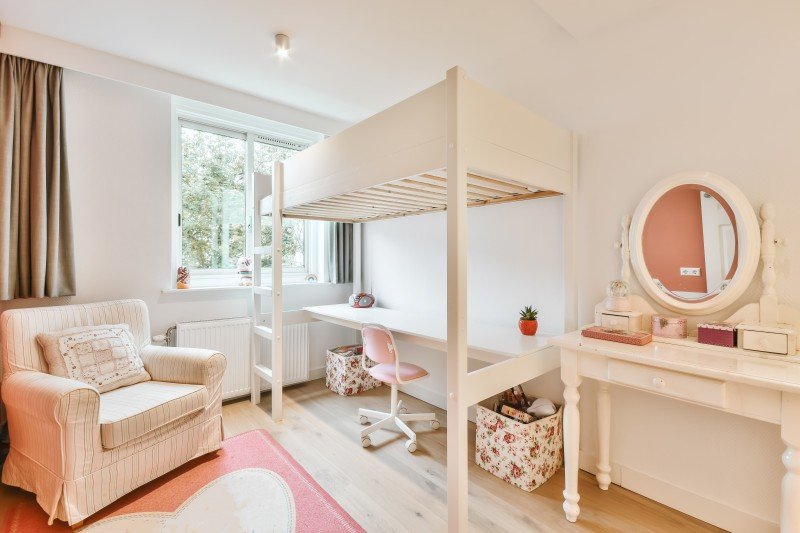It's The Ugly Facts About Bunk Bed For Kids
The Ultimate Guide to Bunk Beds for Kids: Safety, Styles, and Solutions
Bunk beds have long been a popular option among moms and dads seeking to optimize space in their kids's bedrooms. With advantages that go beyond their compact design, bunk beds use an enjoyable and functional sleeping arrangement while motivating brother or sister bonding and promoting creativity. In this thorough guide, we explore different aspects of bunk beds for kids, consisting of security factors to consider, different styles offered, and suggestions for picking the ideal one for your household.
Why Choose Bunk Beds?
Bunk beds are designed to stack one bed on top of another, using vertical space to produce more room for play and storage. They are especially advantageous for households with several children or restricted bed room space. Furthermore, they supply an adventurous sleeping environment that children frequently enjoy.
Secret Advantages of Bunk Beds:
- Space-saving design: Ideal for small rooms or shared areas.
- Economical: Often more budget friendly than buying two separate beds.
- Motivates social interaction: Promotes bonding among siblings or good friends.
- Flexible options: Available in numerous styles and setups to match any space style.
Safety First: Essential Considerations
When choosing a bunk bed for kids, safety must be the top concern. The following features are crucial for making sure a protected sleeping environment:
Important Safety Features:
- Sturdy Construction: Ensure that the bed frame is made of resilient materials such as solid wood or metal.
- Guardrails: Bunk beds need to have guardrails on both sides of the upper bunk to prevent falls.
- Ladder Safety: A tough, integrated ladder or stairs with anti-slip rungs is essential for safe access to the top bunk.
- Weight Limit: Check the producer's weight limit capability for both the leading and bottom bunk.
- Bed mattress Size: Use the right mattress size as defined by the bed maker to ensure a tight fit within the bed frame.
Safety Tips for Parents:
- Monitor Sleep Habits: Teach children the value of not playing on or leaping off the bunk beds.
- Age Appropriateness: Generally, the upper bunk appropriates for kids aged 6 and older.
- Routine Inspections: Periodically inspect for any loose bolts, screws, or structural damage.
Designs of Bunk Beds
Bunk beds can be found in a range of designs, enabling moms and dads to choose one that matches their kid's room decor while meeting particular requirements. Below are some popular designs:
Popular Bunk Bed Styles:
- Traditional Bunk Beds: Simple and timeless designs made from wood or metal with no extra functions.
- Loft Beds: Features a raised leading bunk with space beneath for a desk, play location, or extra storage.
- L-Shaped Bunk Beds: Arranged in an L-shape, typically ideal for corner spaces and can have extra storage choices.
- Twin over Full Bunk Beds: A twin bed on the top and a bigger full-sized bed on the bottom, accommodating kids or teens of numerous ages.
- Triple Bunk Beds: Designed to fit three beds in a single footprint, suitable for larger households or sleepovers.
A Comparison of Bunk Bed Styles
Bunk Bed Style
Description
Best For
Conventional
Traditional design with two stacked beds
Requirement bedroom setups
Loft Bed
Raised bed with functional space below
Research or play locations
L-Shaped
Bunk beds organized in an L-shape
Corner areas
Twin over Full
Twin bed on top, complete bed listed below
Different age siblings
Triple Bunk
3 stacked beds
Big families or sleepovers
Picking the Right Bunk Bed
When looking for the ideal bunk bed, consider the following aspects to ensure you make a notified decision:
Key Factors to Consider:
- Room Size: Measure the space dimensions to identify the proper size and height of the bunk bed.
- Kid's Age: Consider the age of your kid(ren) when choosing a design and security features.
- Functionality: Think about how much storage or play space you need and whether the bunk bed ought to serve extra functions.
- Budget: Set a budget that includes not only the bunk bed however also the required mattress and devices like bedding or security gates.
Frequently Asked Questions About Bunk Beds for Kids
1. What age is appropriate for a kid to oversleep the top bunk?
Normally, children aged 6 and older ought to be able to securely oversleep the top bunk, though you ought to constantly consider your kid's maturity level.
2. Are bunk beds safe for young children?
It is not suggested for young children or really children to oversleep the leading bunk due to the danger of falling.
3. How do I keep the bunk bed?
Inspect the bed routinely for any signs of wear and tear, tightening up screws, and cleaning the bed mattress to ensure extended security and durability.
4. Can I transform a bunk bed into two different beds?
Numerous bunk beds are created to be convertible, permitting you to separate the beds when required. Inspect the maker's specs before purchasing.
5. How can More methods in a bunk bed space?
Use under-bed drawers, racks, or lofted designs to produce extra storage options in a room with a bunk bed.
Bunk beds offer a delightful blend of fun, performance, and space-saving energy, making them a perfect choice for young households. By considering safety features, various styles, and practical elements such as space size and age appropriateness, parents can select the best bunk bed for their child's requirements. With the right option, bunk beds can change a bed room into a wonderful space that motivates play, imagination, and bonding among siblings. Constantly remember to focus on security and maintenance to take advantage of this unique sleeping plan.
